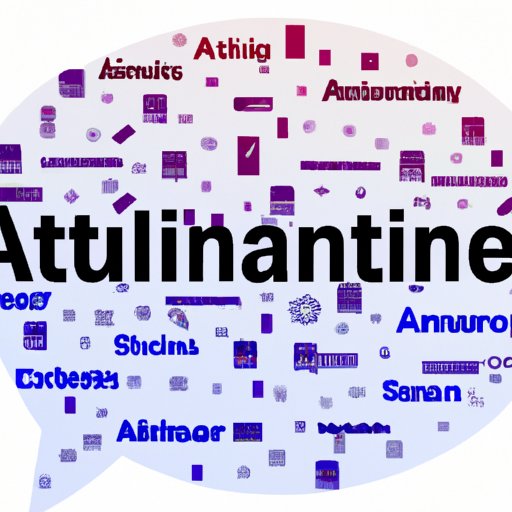Introduction
Artificial Intelligence (AI) is a rapidly evolving field of technology that has the potential to revolutionize many aspects of our lives. AI is a computer system capable of performing tasks that normally require human intelligence, such as visual perception, speech recognition, decision-making and translating languages. AI technologies are being used for a range of applications, from healthcare to transportation and security.
This article will explore what is included in Artificial Intelligence, from its basic building blocks to its potential applications in automation and robotics. We will examine the role of machine learning in AI, and discuss natural language processing (NLP) and its impact on AI technologies.
Exploring the Components of Artificial Intelligence
At its core, AI is a set of algorithms and techniques that can be used to analyze data and make decisions that would otherwise be impossible or too time consuming for humans to do. The basic building blocks of AI include neural networks, deep learning, genetic algorithms and reinforcement learning.
Neural networks are algorithms inspired by the human brain. They consist of a series of nodes that are connected together and can learn from data. Deep learning is a type of neural network algorithm which uses multiple layers of neurons to process data. Genetic algorithms use evolutionary processes to find optimal solutions to complex problems. Finally, reinforcement learning algorithms use trial and error to learn how to perform certain tasks.
These building blocks are combined to form different types of AI, such as supervised learning, unsupervised learning, and semi-supervised learning. Supervised learning algorithms are trained using labeled data, while unsupervised learning algorithms are trained using unlabeled data. Semi-supervised learning algorithms are a combination of both supervised and unsupervised learning algorithms.

Examining the Role of Machine Learning in AI
Machine learning is a subset of AI that focuses on the development of computer programs that can learn and adapt to new data. It is based on the idea that machines can learn from experience without being explicitly programmed. Machine learning algorithms use statistical models to identify patterns in data and make predictions about future outcomes.
The most common types of machine learning algorithms are supervised learning, unsupervised learning and reinforcement learning. Supervised learning algorithms are trained using labeled data and can be used for classification and regression tasks. Unsupervised learning algorithms are trained using unlabeled data and can be used for clustering and dimensionality reduction tasks. Reinforcement learning algorithms are trained using trial and error and can be used for decision-making tasks.
Machine learning is widely used in AI applications, such as facial recognition, automated driving and medical diagnosis. For example, a machine learning algorithm could be used to detect cancerous cells in a medical image. Another example is an AI system that can recognize objects in an image and identify the object’s characteristics.

Understanding Natural Language Processing and its Impact on AI
Natural language processing (NLP) is a subfield of AI that deals with understanding and generating human language. NLP is used to develop systems that can understand and interpret spoken and written language. It is also used to generate natural language output, such as text-to-speech and automatic summarization.
NLP is used in a variety of AI applications, such as chatbots, question answering systems and search engines. For example, a chatbot could use NLP to understand user input and generate a response in natural language. Another example is a search engine that uses NLP to understand user queries and return relevant results.
NLP is also used in machine translation systems, which are used to translate text from one language to another. These systems use NLP to understand the source language and generate a translation in the target language.

Investigating the Potential of AI Technologies in Automation and Robotics
Automation and robotics are two areas where AI technologies can be used to great effect. Automation is the use of computers to perform tasks that were previously done manually. Robotics is the use of robots to automate physical tasks, such as manufacturing and assembly.
AI technologies can be used to automate processes and tasks, such as customer service, data entry and inventory management. AI-powered robots can be used for a range of applications, such as warehouse automation, surgical assistance and home cleaning. AI-powered autonomous vehicles are being developed for use in transportation and logistics.
Conclusion
In conclusion, this article has explored the components of Artificial Intelligence, from its basic building blocks to its potential applications in automation and robotics. We have examined the role of machine learning in AI, and discussed natural language processing and its impact on AI technologies.
AI technologies have the potential to revolutionize many aspects of our lives. From healthcare to transportation and security, AI is being used for a range of applications. As AI technologies continue to advance, we can expect to see more and more AI-powered automation and robotics in the years to come.
(Note: Is this article not meeting your expectations? Do you have knowledge or insights to share? Unlock new opportunities and expand your reach by joining our authors team. Click Registration to join us and share your expertise with our readers.)
